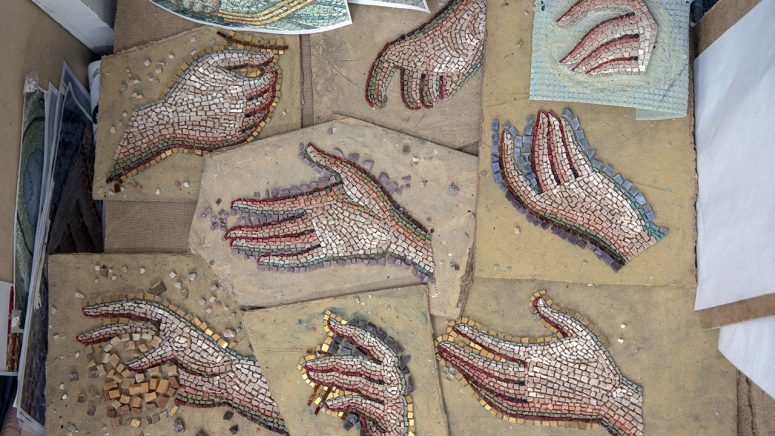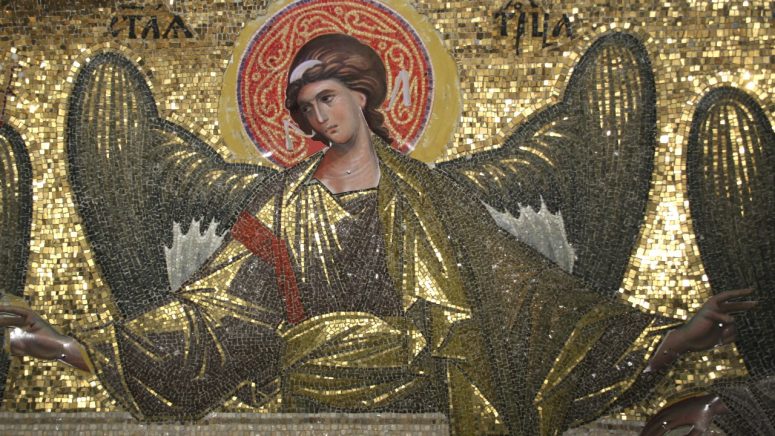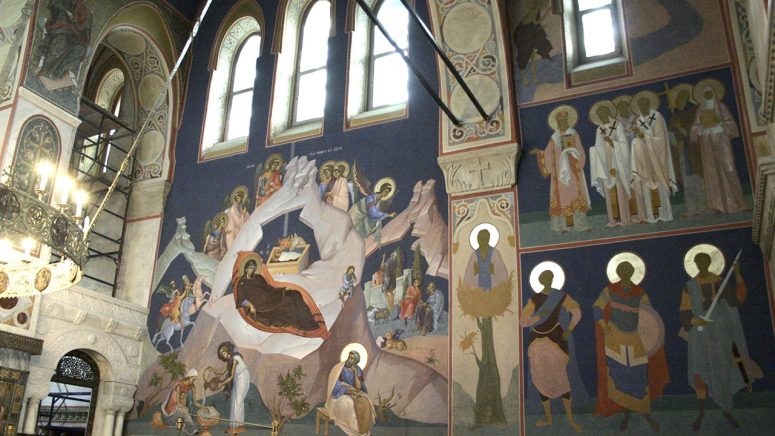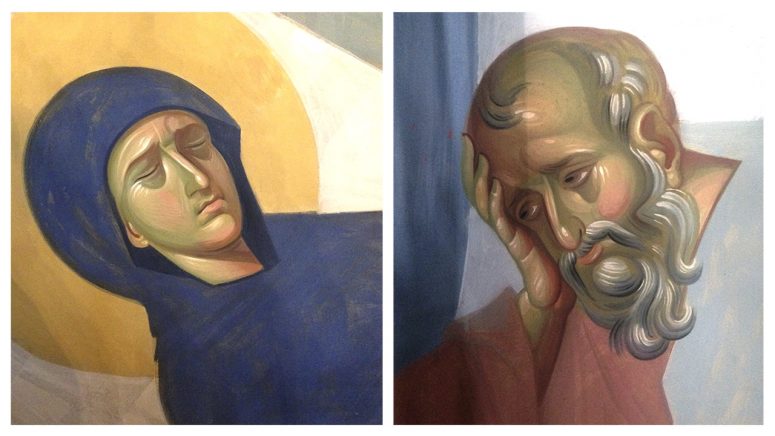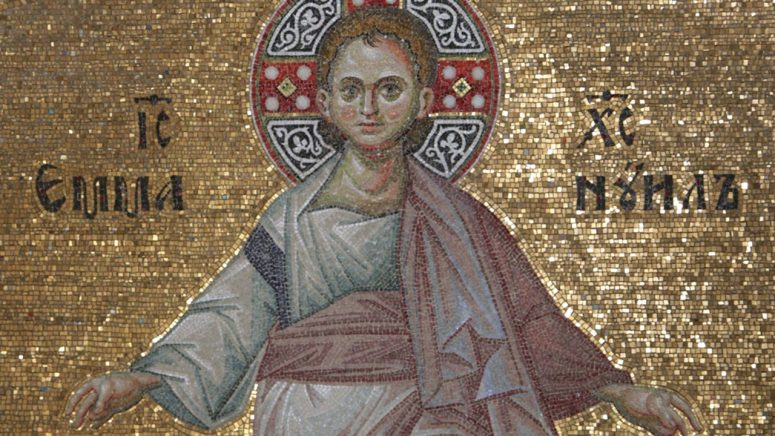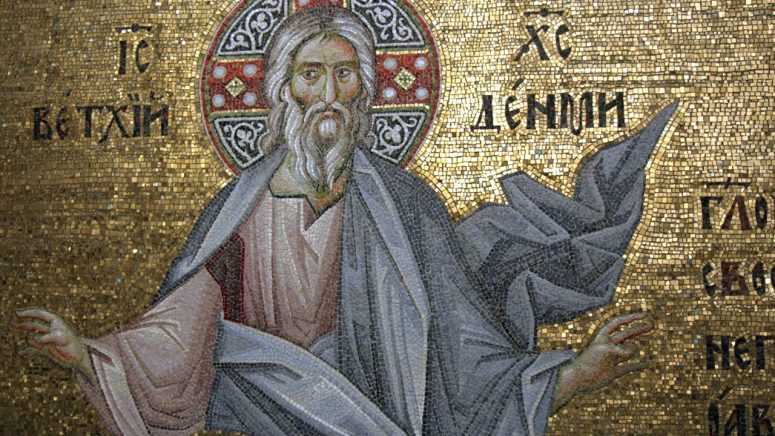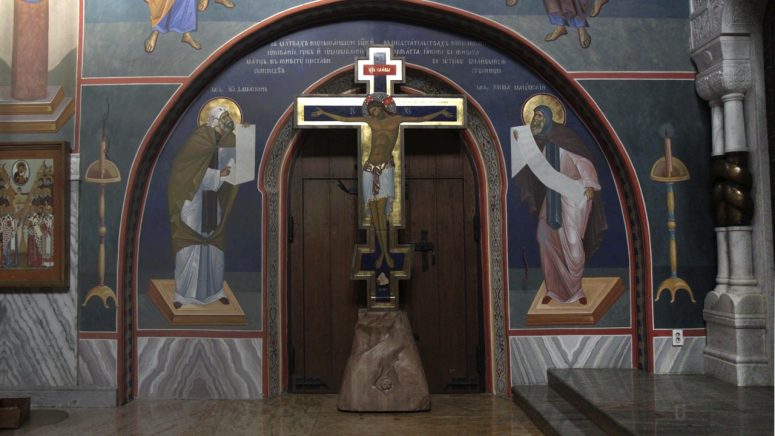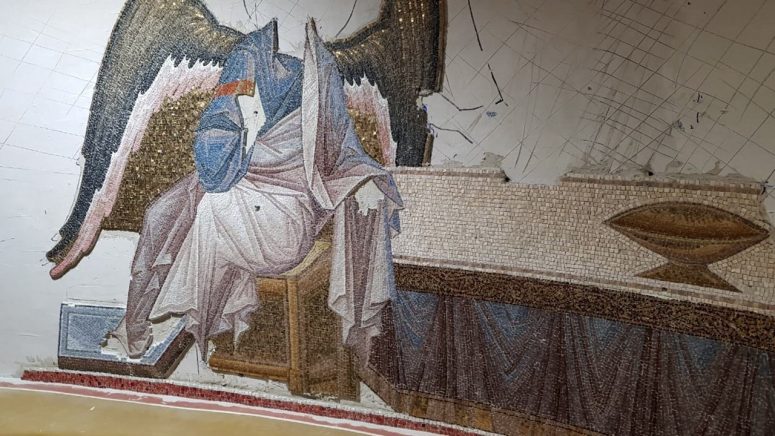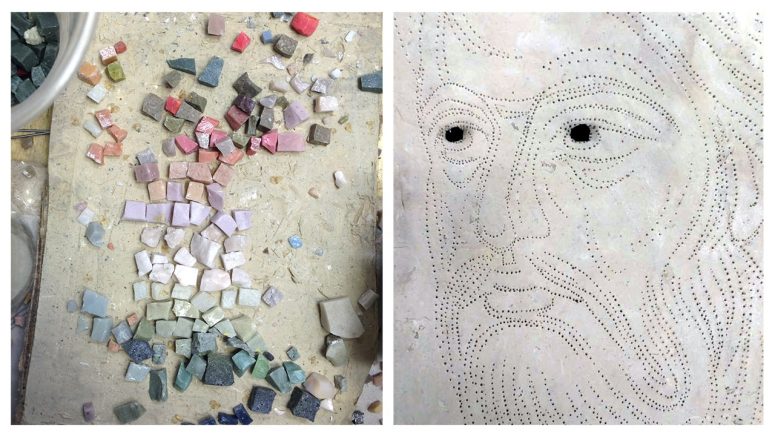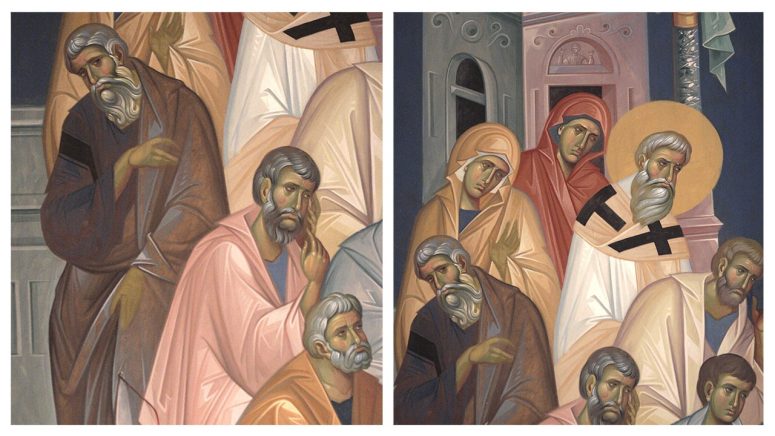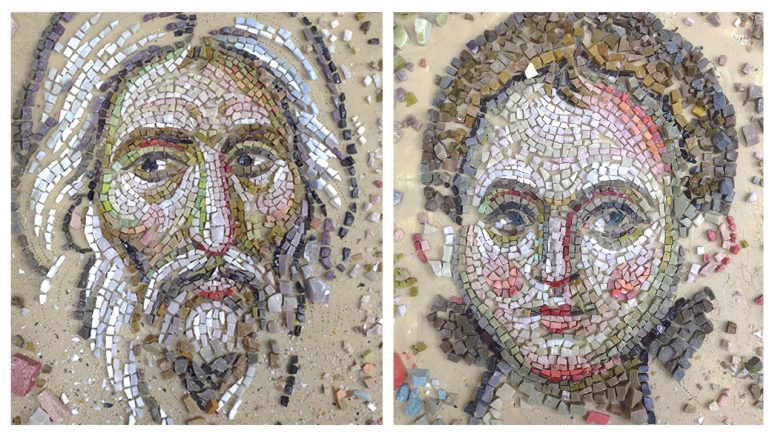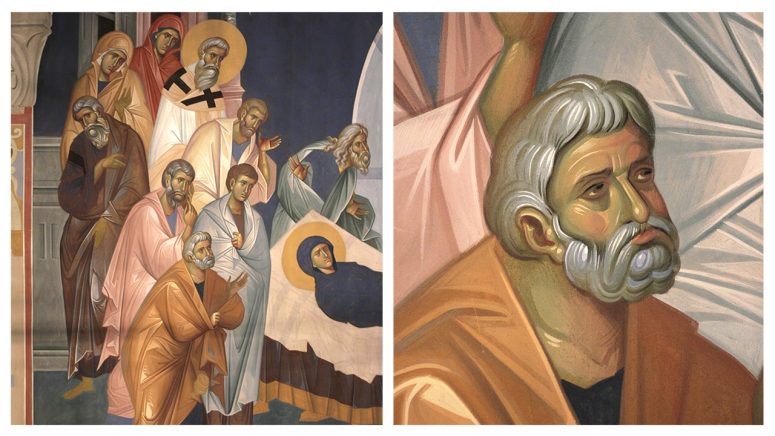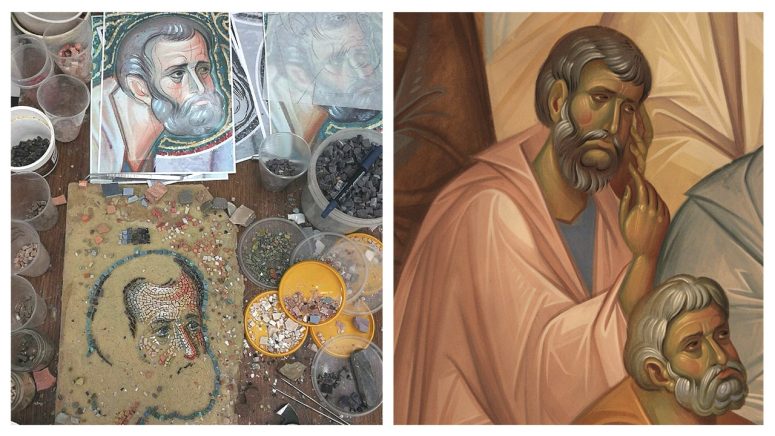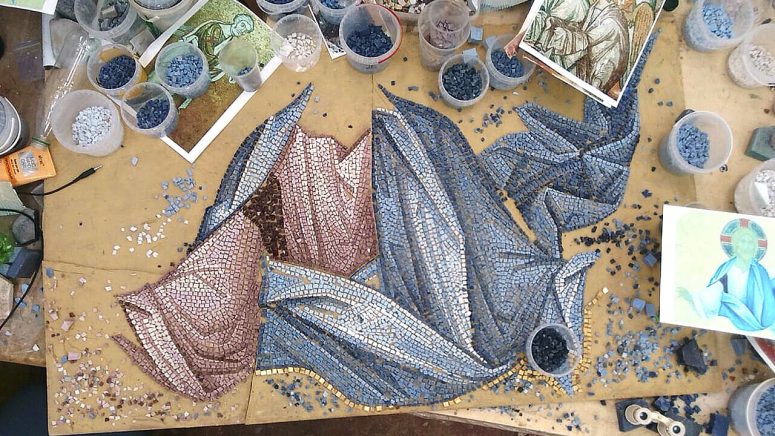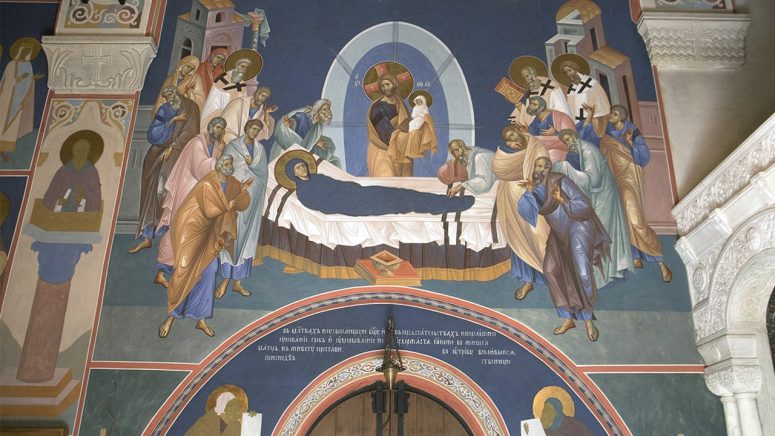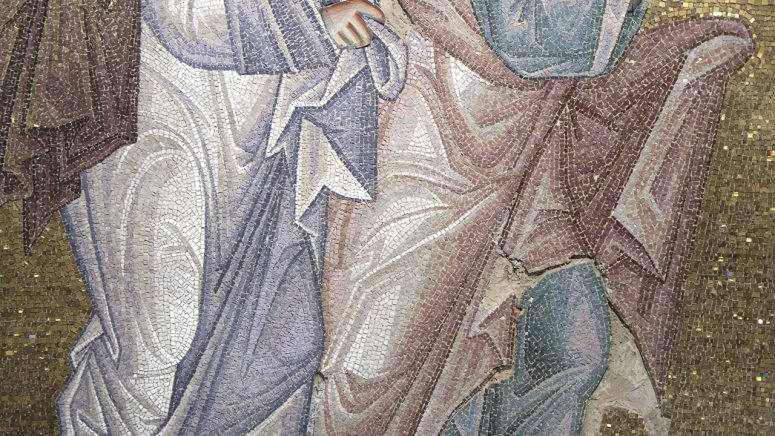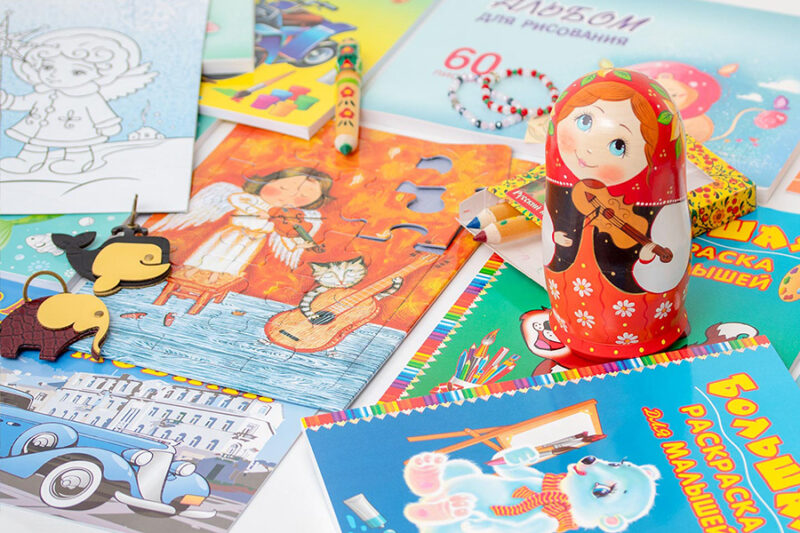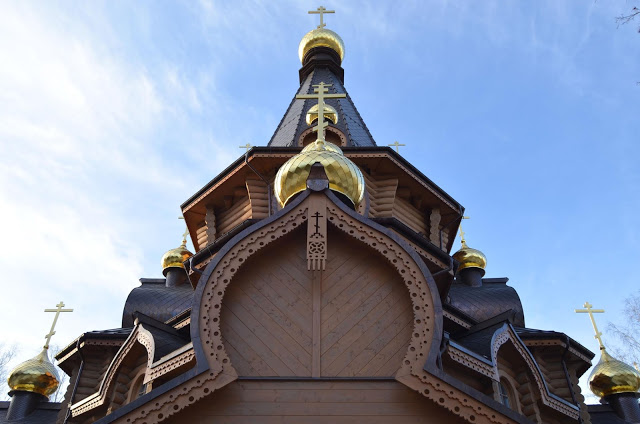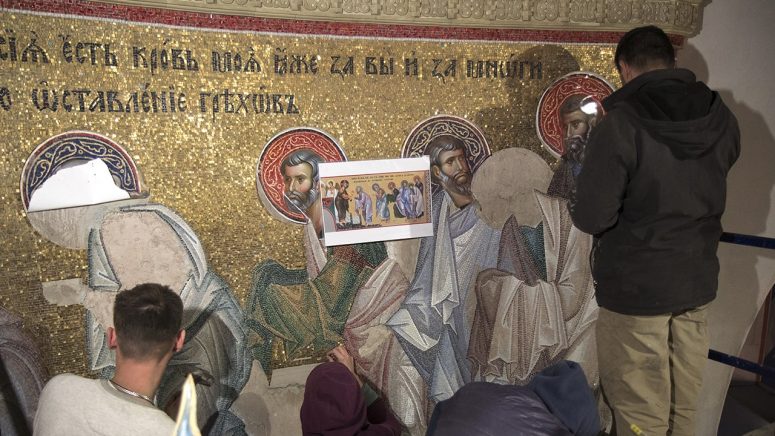
Our craftspeople have been decorating churches of Holy Archangel Michael Zverinets Monastery for several years. Zverinets Monastery is a famous cave monastery located in the eponymous historic part of Kyiv. It was hidden under ground and remained untouched for many centuries. Recently, the monastery has seen a revival of monastic life and worship. Along with that, efforts aimed at decoration of churches are underway. A great part in this process belongs to the craftspeople from St. Elisabeth Convent. The brothers and sisters from our Mural Painting Workshop have been busy decorating Joy of All Who Sorrow Church of Zverinets Monastery. We asked the head of this workshop to share his impressions of this project.
Dmitry Kuntsevich, the head of Mosaic Workshop: Zverinets Monastery has been our long-standing customer. The monks of that monastery and we have a similar spiritual outlook. They’ve known our workshop for a long time, and they have been working with us for a number of years.
We have finished the Dormition of Theotokos fresco at the moment. It is located on the north wall of the church. There is an almost finished fresco of the Nativity on the opposite wall.
It took us more than a year to make those two paintings, not to mention the painstakingly long preparations. First, we devised the artistic solution and then drafted a preliminary sketch. At the same time, we were covering the walls with a primer coat, which consisted of slaked and washed lime, white silica sand, fine brick powder, linen fibers, and whole chicken eggs (for surfaces intended to be covered with mosaic). After all those stages, the artists proceed to do the paintings. Thanks to this technology, surfaces correspond to the requirement. Paint sticks to them better. When the paint dries up, it retains its fresh and saturated color for many years. We learned the recipe of the primer from the artists of Optina Pystun. Hegumen Hilarion in particular helped us a lot.
We are always trying to figure out what makes the place where we work special. We aim to discover and reflect its spirit. Based on its history and unique atmosphere, we explore ideas and develop artistic solutions.
Zverinets Monastery has a distinct natural color palette. We maintain harmony and create a light-filled impression by using pigments that resemble natural paints – the ones that can be observed in nature.
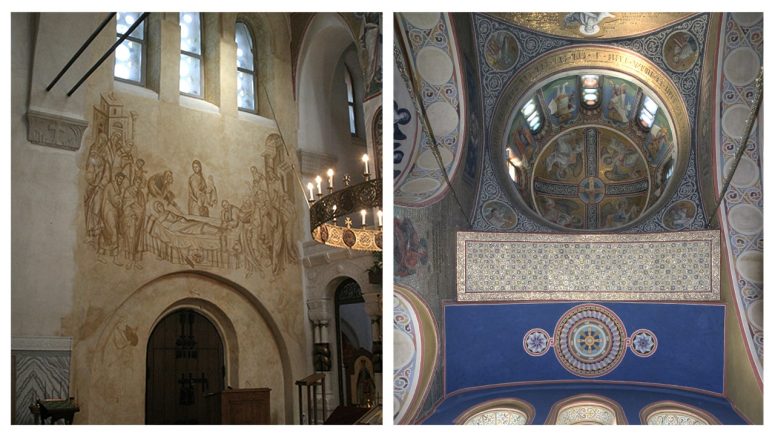
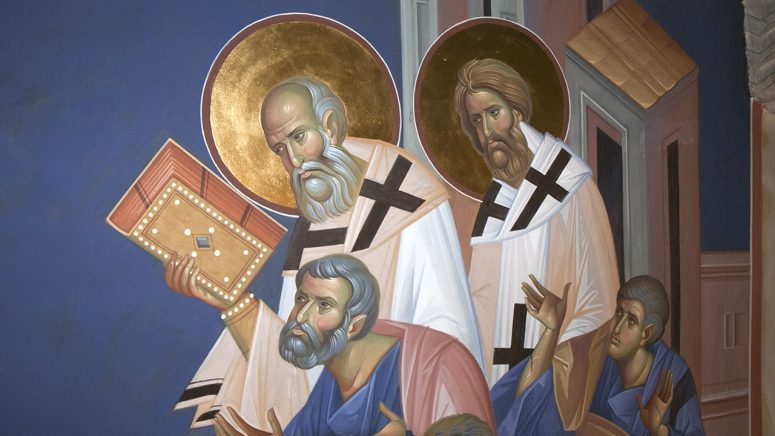
Mosaic occupies a considerable area in the churches of Zverinets Monastery. There are mosaic images of the Holy Savior, Christ the Pantocrator, St. John the Baptist, Archangel Michael – who is the patron saint of both the monastery and the city of Kyiv – in the conches of the sanctuary. There is an image of the Last Supper under the icon of the Savior, with a painted icon of holy hierarchs, titled The Liturgy of Holy Fathers, below it.
The mosaics are also made by the craftspeople from our Mural Painting Workshop. They have been covering the walls of the church with countless small stones (on average 1 cm wide or even smaller) little by little for the last seven years.
They utilize the classical Byzantine techniques, characterized by accurate presentation of the image, to make their mosaics. The fact that each image has contours adds contrast to it, especially when viewed from a distance.
The mosaics are made using smalt – colored opaque glass – and gold leaf. Our craftspeople use natural stones, such as marble and granite, too.
First, the craftspeople lay out all hues and shades of the smalt and pick those that they plan to use for the project. They lay out a small fragment of the image using the color shades they’ve found and chosen, constantly adjusting and readjusting the colors if necessary, and so on. As soon as the whole image is laid out on plasticine (i.e., plywood panels covered with plasticine), they transfer the image to a plastered wall. It is the second and the final stage of making mosaic.
Currently, we have finished almost all mosaics in the church. Right now, we are making the mosaic of the Holy Trinity, which will be located on the vault of the central apse of the sanctuary. Apart from that, our craftspeople continue painting vaults of the altar, side apses, sacristy, and Oblation Table.

